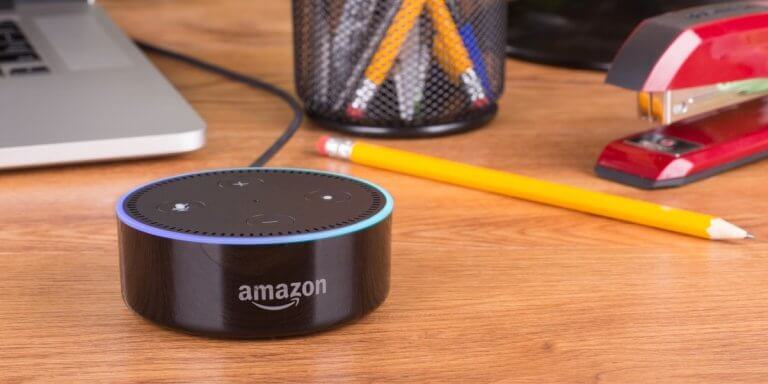
With the rise of voice assistant devices like Google Home and Alexa Echo Dot, more schools are incorporating these technologies into the classroom.
Also known as virtual or digital assistants, the potential for these smart devices in assisting teachers in class are just being tapped.
There have been concerns over privacy issues, but as pointed out in EdSurge, it hasn’t prevented teachers from adopting them in the classroom.
Due to these concerns, it’s wise for teachers and educators to first ensure that parents and students are comfortable allowing these digital assistants in the classroom.
Assuming that everyone is on board with having a voice assistant device in class, how do they help teachers?
A teacher at the Concord Elementary School in Garnet Valley, Philadelphia, one of just four districts in the country taking part in a year-long pilot programme with a pioneering developer of an Alexa app for schools called askMyClass, found it a great hit among students.
Marianne Maye, who teaches second grade, said, “What’s really funny is that they listen to Alexa a lot more cheerfully than they listen to us. This is what this generation has at their fingertips, or lips, so to speak. And if I don’t become part of their generation — their experience — then I’m not going to be as effective.”

The kids at Concord Elementary School love having a voice assistant device join them for class. Source: Philly.com
A recent experiment also found that the Echo Dot was very useful in keeping a class orderly when a teacher was away.
It was conducted by Dousay, Assistant Professor and Researcher for the Doceo Center, and Doceo Director of Cassidy Hall.
The Doceo Center, located at the University of Idaho, researches new technologies and how they can be used in K12 classrooms.
For the experiment, Dousay and Hall placed 90 Amazon Echo Dots in schools across Northern Idaho, and found that it has enormous potential to be a powerful classroom assistant, though the technology could never fully replace teachers.
Our @amazon Echo Dot is reaching its #jaguarmax by being a great classroom helper! pic.twitter.com/0AEKtb7GTI
— Miss Stefanowicz (@Miss_S_GVES) September 7, 2017
Dousay said that when a middle school teacher left the classroom for a few minutes and relied on Echo Dot to keep the students quiet, it actually worked – despite the voice assistant device not having a camera.
But that’s not the only way the Echo Dot proved itself as a reliable assistant; it was found also found to be useful when dealing with kids with special needs.
One special education teacher found that the Echo Dot had an incredible impact on a student with autism.
The student found it difficult to communicate with classmates and instructors, to the point where he had to be pulled from normal classes and could only work one-on-one with the special education teacher.
But after sometime of being around the Dot, he began to communicate with it, asking questions when he thought the teacher wasn’t paying attention.
Dousay said, “[The student]began asking questions. He began answering Alexa. If you hadn’t noticed, about six months ago, Amazon rolled out an update so now when you give Alexa a command and maybe out of habit you say thank you, Alexa now says ‘you’re welcome.’ That small change has huge implications, because now that young man feels he’s engaging in a conversation with a person and he’s learning proper interaction.”
I’m thinking Alexa is having an impact on my class. Poetry writing about things in our everyday life and personification, too. #jaguarmax @askMyClass @SamMormando pic.twitter.com/d6Ama1PAcr
— Peggy Clark (@mrsclarkgv) April 4, 2019
Other examples Dousay shared included how a family and consumer science teacher found the timer function a great help.
“Before using the Dot, the teacher needed to remember which oven was associated with which of the many blaring alarms in the classroom. The Dot allowed the teacher to run multiple timers and label each with the name of the student who needed it.”
Students without special needs also seem to be more comfortable asking Alexa questions, and it could be kids who are naturally shy or reserved, who find it less intimidating to ‘talk’ to a virtual assistant.
Put an echo dot in my classroom and overheard this convo..
“how do you think she goes to the bathroom, let’s ask her”
“ALEXA, DO YOU POOP?”
— han (@hannsassy) January 18, 2018
Math and science teachers also found the Dot helpful for doing basic tasks like conversions, which can take up unnecessary time in the classroom if it’s not the focus of the unit.
Rayna Freedman, a 5th-grade teacher at Jordan/Jackson Elementary School in Mansfield, Massachusetts, placed Google Home in her classroom after she noticed her students using the voice assistant function on their Chromebooks.
She said, “These kids are going to be working in environments where they’re going to be using assistive devices. And if we don’t teach them now how to talk to them, what’s going to happen?”
Among other successes, Freedman found that despite her constant encouragement for kids to look words up in a dictionary or ask her the definitions, they didn’t. But after the introduction of Google Home, she found that they didn’t mind asking Google Home for help.
A teacher named Lucie Renard also shared her experience using Google Home, another popular voice assistant device, on Book Widgets.
“I can only imagine the wonders it can do for teachers and students. How many times did your students ask you something you didn’t know the answer to? Or how many times you said to look it up by next class, and you actually forgot to look it up – hoping that the student won’t bring it up again? Google Home could help you out!”
I got an @amazon Echo Dot for my classroom and I’m so excited that I never have to answer another “How do you spell….” question ever again 🙌🏼
— Madison Bacon (@mrsmadisonbacon) January 25, 2018
She shared 11 ways that Google Home can help teachers out in the classroom. They included using Google Home to answer students’ questions when the teacher is stuck or doesn’t have the time to answer them all, helping out with homework when the teacher is busy, and other uses like the calendar and timer functions.
She also said that they can perform functions like storytelling and games. But Renard made it a point to mention, “It’s still Google. It’s still the internet. There’s still fake news. Not everything Google says is exactly true. Google collects information from good ranking webpages and its own search history.”
With all these great ways voice assistants can help out in the classroom, it appears they are proving themselves to become the new teacher’s assistant students love!







